Installing alarm sensors on double-hung windows is a crucial step in fortifying your home’s security system against potential intruders.
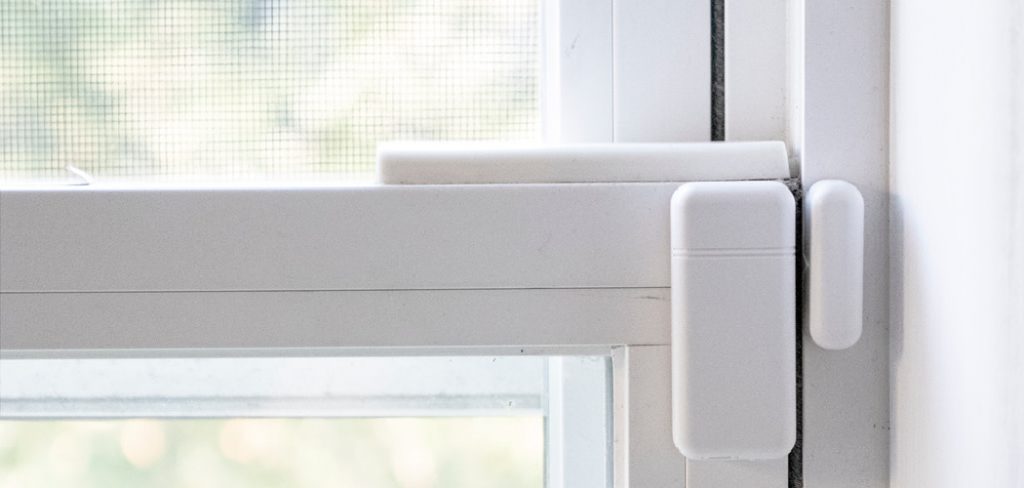
These windows are common in many homes and present unique challenges when it comes to sensor placement. However, with the right approach and techniques, you can effectively install alarm sensors on double-hung windows to enhance your home’s security.
In this guide, we’ll explore the step-by-step process of how to install alarm sensors on double hung windows, covering everything from choosing the optimal sensor type to positioning them for maximum effectiveness.
By following these instructions, you can ensure that your double-hung windows are properly protected, providing you with peace of mind and security for your home and loved ones.
Importance of Securing Double Hung Windows
Securing double hung windows is of paramount importance when it comes to bolstering the overall security of your home. Often favored for their traditional aesthetic and versatility, double hung windows can, unfortunately, present an attractive entry point for burglars if not properly secured.
These windows, which can be opened from the top or bottom, offer unique vulnerabilities that standard windows do not. Without effective alarm sensors, these windows could serve as silent gateways for intruders.
By installing alarm sensors, you not only deter potential burglars but also integrate an important layer of protection that can alert you and the authorities in real-time to any unauthorized attempts to breach your home.
Thus, securing your double hung windows with reliable sensors is not just about protecting property; it’s about safeguarding the peace of mind and safety of you and your loved ones.
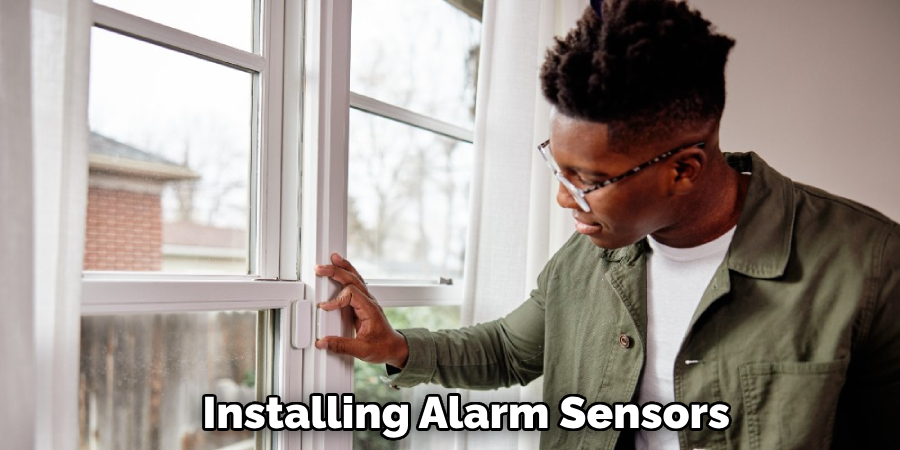
Benefits of Installing Sensors on Double Hung Windows
The installation of alarm sensors on double hung windows brings several key advantages that enhance home security and provide homeowners with significant peace of mind. Firstly, increased security is the most obvious benefit.
These sensors act as a first line of defense, alerting homeowners to any attempt at unauthorized entry. Secondly, the presence of sensors can serve as a deterrent to potential burglars. Knowing that a home is equipped with an advanced security system can discourage intruders from attempting a break-in. Thirdly, installing sensors can lead to reduced home insurance premiums.
Many insurance companies recognize the added protection provided by home security systems and offer discounts to homes equipped with them. Additionally, the ease of integration with smart home systems enhances overall home management. Homeowners can monitor and control the security of their windows remotely, providing a level of convenience and control that was previously unattainable.
Finally, the peace of mind that comes from knowing your home is protected cannot be underestimated. Whether at home or away, homeowners can feel confident that their property and loved ones are safer due to the installation of alarm sensors on their double hung windows.
Assessing Window Configuration
Before proceeding with the installation of alarm sensors on double hung windows, it’s essential to assess the window configuration accurately. This step is crucial for determining the most effective position for the sensors and ensuring that the entire window unit is secured.
Start by examining if your double hung windows slide vertically up and down or if they have any unique features such as tilting inwards for easy cleaning. Understanding the movement and locking mechanisms of your windows will help you identify potential vulnerabilities that could be exploited by intruders.
Additionally, consider the frame material as it could affect the installation process. For instance, installing sensors on wooden frames may require different hardware or mounting techniques compared to vinyl or aluminum frames. You should also measure the window dimensions to ensure that you select sensors that fit properly and cover the entire window area.
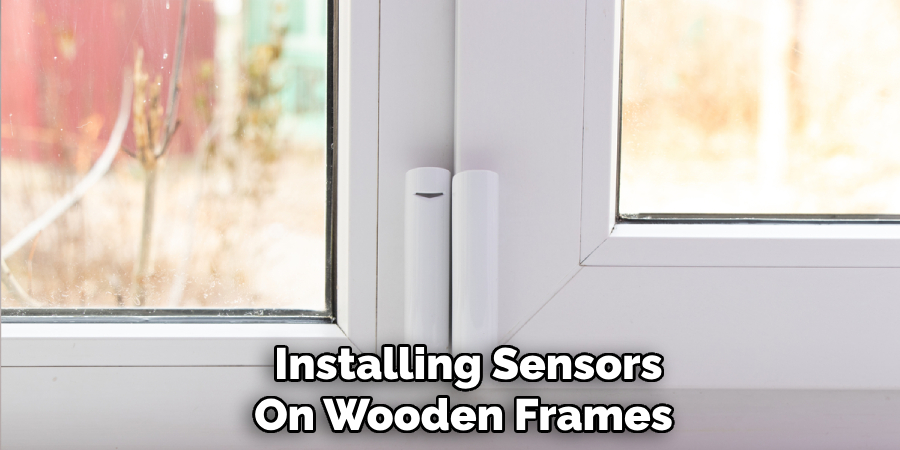
Pay special attention to the space between the upper and lower sashes when closed, as this is a common entry point for burglars. By thoroughly assessing your window configuration, you can proceed with the installation with a clear plan in place, ensuring that your double hung windows are effectively secured against potential threats.
Understanding Double Hung Window Mechanics
To effectively install alarm sensors on double hung windows, it’s essential to understand the mechanics behind their operation. Double hung windows consist of two sashes, upper and lower, that move vertically in separate grooves in the side jambs.
Both sashes can be raised and lowered to various heights, allowing for ventilation either from the top or bottom of the window. Some models also allow the sashes to tilt inwards, facilitating easy cleaning of the exterior glass.
The movement of these sashes is facilitated by a balance mechanism, typically involving springs or weights, which ensures that the windows stay open at the desired height. The locking mechanism, usually located at the meeting rail where the two sashes overlap when closed, secures the window and helps to maintain an airtight seal.
Understanding these basic mechanics is crucial for selecting the appropriate alarm sensors and determining the optimal placement to ensure comprehensive coverage and security of the window. Proper knowledge of the window’s operation allows for a seamless integration of sensors without hindering the window’s functionality or compromising its security.
Identifying Ideal Sensor Placement
Identifying the ideal sensor placement is key to maximizing the security benefits of installing alarm sensors on double hung windows. The objective is to place sensors where they can detect any unauthorized window manipulation without being easily noticeable or accessible to intruders.

Typically, the best placement for sensors on double hung windows involves positioning them at the meeting rail where the two sashes overlap. This placement ensures that whether a burglar attempts to open the window from the top or bottom, the sensor will be triggered.
In addition to placing sensors on the meeting rail, consider the installation of secondary sensors at the bottom corner of the lower sash for added security. This strategy covers potential vulnerabilities, especially in larger windows where movement at one end might not sufficiently shift the meeting rail to trigger a central sensor.
For windows that allow tilting inwards, it’s also wise to install sensors that can detect this specific movement to prevent bypassing the primary alarm mechanism.
Furthermore, the use of glass break detectors as supplementary sensors can provide an extra layer of security. These detectors should be placed within range of the window panes to capture the specific frequency of breaking glass, offering immediate alerts in the event of forced entry.
By strategically placing sensors to cover all possible points of entry, you can significantly enhance the security of your double hung windows. This comprehensive approach ensures that any attempt to breach the window triggers an alarm, alerting homeowners and possibly deterring the intruder in the process.
Considerations for Sensor Compatibility
When selecting alarm sensors for double hung windows, considering compatibility with your existing security system and the window’s characteristics is essential. First, ensure the sensors are compatible with the brand and technology of your current home security system.
Wireless sensors are preferred for their ease of installation and flexibility in placement, but they must be able to communicate effectively with your main security hub.
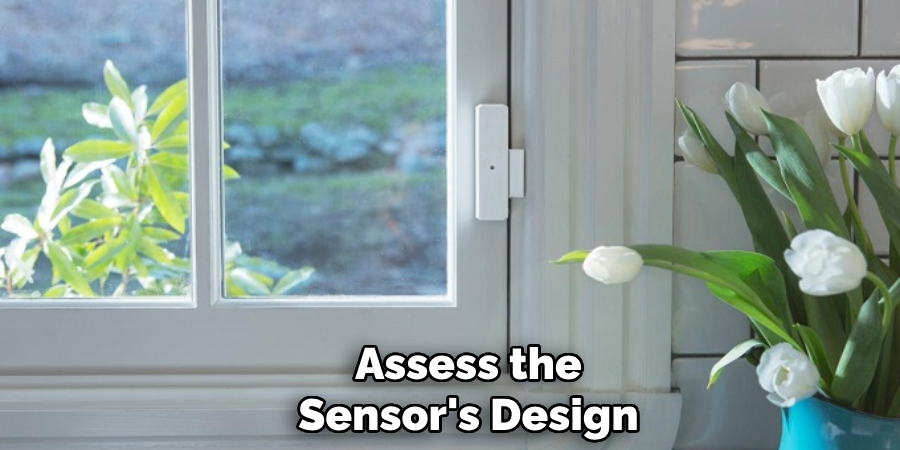
Next, assess the sensor’s design and operational requirements against your window’s material and operation style. Sensors must adhere securely to the surface they are mounted on; thus, the adhesive or mounting hardware should be suitable for either wood, vinyl, or aluminum frames without causing damage.
Additionally, the sensor’s size should be appropriate for the window frame, ensuring it does not hinder the window’s normal operation or aesthetic appeal.
Also, consider the environmental conditions the sensors will be exposed to. For instance, sensors placed on windows facing the exterior elements directly should be durable enough to withstand variations in temperature, humidity, and exposure to direct sunlight without functionality loss.
Lastly, evaluate the sensor’s sensitivity and customization options. The ideal sensor for double hung windows should be adjustable to avoid false alarms triggered by regular use or minor vibrations, such as those caused by strong winds or incidental contact.
This capability ensures that your home security system remains effective and reliable without causing undue inconvenience.
By carefully considering these aspects of sensor compatibility, homeowners can select the best alarm sensors for their double hung windows, ensuring seamless integration with their home security system and effective safeguarding of their property.
Gathering Necessary Tools and Materials
Before initiating the installation of alarm sensors on double hung windows, gathering all necessary tools and materials is crucial to ensure a smooth and efficient process. To begin, ensure you have a high-quality drill with a variety of drill bits, as some window frames may require precise drilling for sensor mounting.
A set of screwdrivers, both flathead and Phillips, will be indispensable for tightening screws and adjusting sensor components. It’s also beneficial to have wire strippers and pliers on hand if your sensor system involves any wiring.
You will need the alarm sensors themselves, which should have been selected based on the earlier considerations of compatibility and placement strategy. Ensure you have enough sensors for all windows you plan to secure, along with any supplementary sensors such as glass break detectors. If the sensors are wireless, check that batteries are included or purchase them separately.
Mounting hardware or adhesive strips, which may or may not come with your sensors, are necessary for attaching the sensors to the window frames. Choose adhesives that are strong yet won’t damage your window frames upon removal. Additionally, a measuring tape will be handy to precisely position the sensors according to the identified optimal locations.
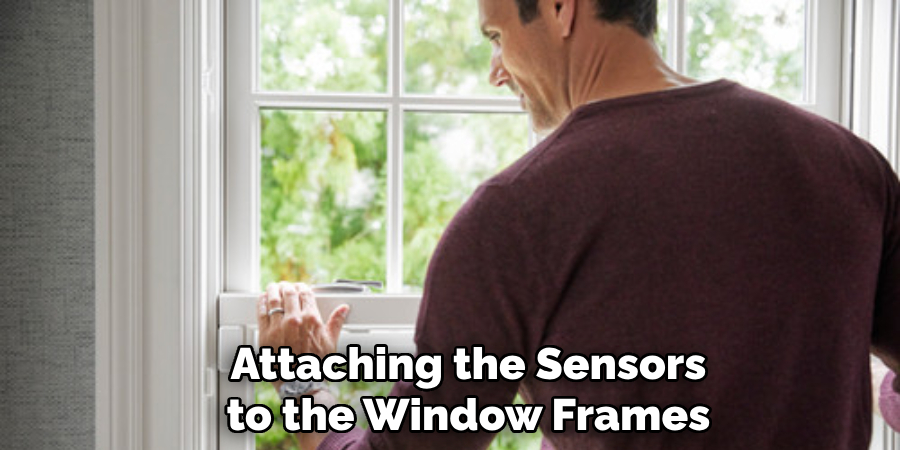
Don’t forget to have a notepad and pen or a digital device nearby to take notes or refer to the installation instructions that come with your sensors. Ensuring all these tools and materials are prepared before starting the installation will facilitate a successful setup, minimizing disruptions and the need to halt work to procure missing items.
10 Methods How to Install Alarm Sensors on Double Hung Windows
1.Choosing the Right Sensor Type:
Before installing alarm sensors on double-hung windows, it’s crucial to choose the appropriate sensor type. Options include window contacts, glass break sensors, and motion sensors. Window contacts are commonly used for double-hung windows, as they can detect when the window is opened or closed.
2.Determining Sensor Placement:
The placement of alarm sensors on double-hung windows is critical for optimal functionality. Place window contacts on the upper sash of each window to detect when it is opened. Ensure that the sensor and magnet are aligned properly to trigger the alarm system accurately.
3.Measuring and Marking Mounting Locations:
Once you’ve determined the placement of the sensors, use a tape measure to accurately measure the distance between the sensor and magnet. Mark the mounting locations on both the window frame and the movable sash to ensure precise installation.
4.Preparing the Mounting Surfaces:
Before installing the sensors, ensure that the mounting surfaces are clean and dry. Use a mild detergent or rubbing alcohol to remove any dirt, grease, or debris that could affect adhesion. Allow the surfaces to dry completely before proceeding with installation.
5.Mounting Window Contacts:
To mount window contacts on double-hung windows, start by attaching the sensor to the window frame using adhesive backing or screws. Position the magnet on the movable sash, ensuring that it aligns with the sensor when the window is closed. Secure both the sensor and magnet in place, applying firm pressure to ensure proper adhesion.
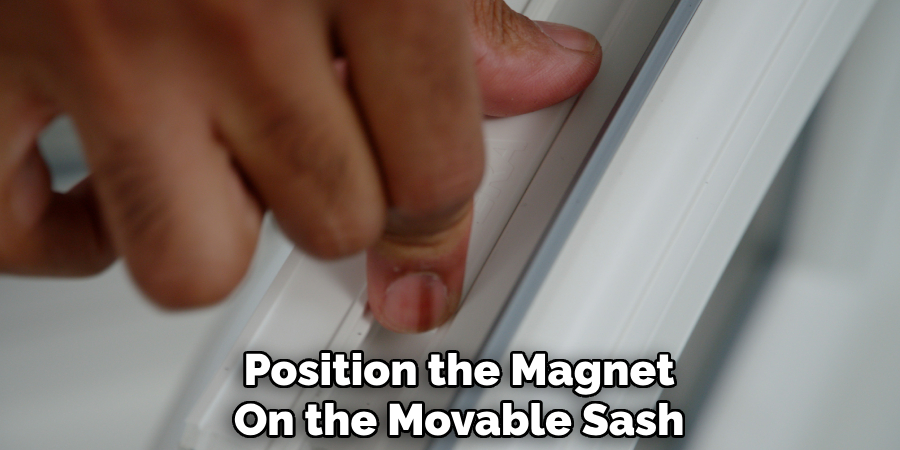
6.Adjusting Sensor Sensitivity:
Once the window contacts are installed, adjust their sensitivity settings as needed. Most alarm systems allow users to adjust the sensitivity of window contacts to prevent false alarms while ensuring reliable detection of window openings.
7.Testing Sensor Functionality:
After installing and adjusting the sensors, it’s essential to test their functionality to ensure they are working correctly. Open and close each double-hung window to trigger the sensors and verify that they send signals to the alarm system promptly.
8.Securing Wiring (if applicable):
If the alarm sensors require wiring for power or connectivity, ensure that the wiring is securely routed and protected. Use cable clips or adhesive cable organizers to secure the wiring along the window frame and prevent it from becoming tangled or damaged.
8.Installing Glass Break Sensors (Optional):
In addition to window contacts, you may choose to install glass break sensors on double-hung windows for added security. These sensors detect the sound frequency of breaking glass and trigger the alarm system accordingly. Follow the manufacturer’s instructions for proper installation and placement of glass break sensors.
9.Routine Maintenance and Testing:
Once the alarm sensors are installed on double-hung windows, incorporate them into your routine maintenance and testing schedule. Regularly test the sensors’ functionality by opening and closing the windows and verify that they trigger the alarm system as expected. Perform visual inspections to ensure that the sensors remain securely mounted and free of obstructions.
Selecting Suitable Sensor Type
When considering alarm sensors for double-hung windows, selecting the most suitable type is a foundational step that impacts the overall security and efficiency of your home alarm system. Among the primary options are magnetic contact sensors, vibration sensors, and glass break detectors, each offering distinct advantages.
Magnetic contact sensors are the most straightforward and commonly used option for double-hung windows. They function by forming a circuit between two components; one attached to the window frame and the other to the moving part of the window.
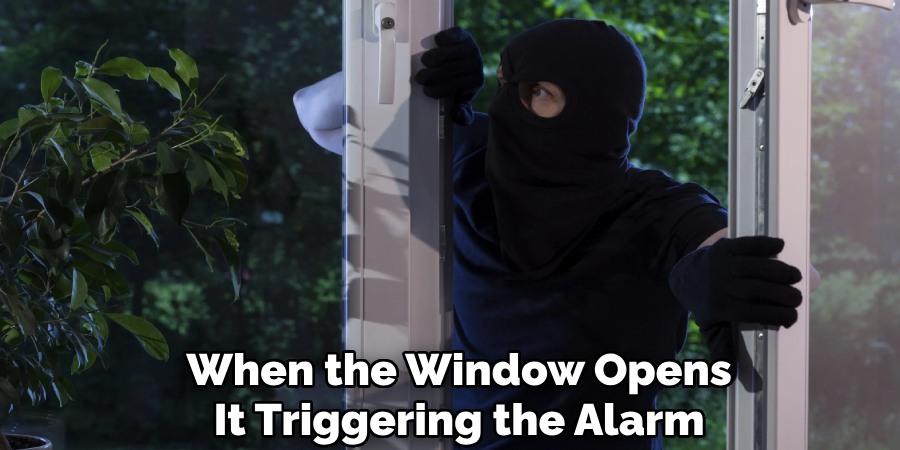
The circuit breaks when the window opens, triggering the alarm. This type is highly reliable for detecting unauthorized entries but does not account for situations where the glass is broken to gain access.
Vibration sensors can detect attempts to tamper with or break the window’s glass before an entry is made. These are sensitive to specific patterns of vibrations, such as those caused by hitting or cutting glass, and are designed to reduce false alarms caused by non-threatening vibrations.
Glass break detectors complement magnetic sensors by providing protection against break-in attempts that bypass opening the window. These sensors use advanced technology to pick up sound frequencies associated with glass breaking, offering an added layer of security.
Choosing the right type of sensor involves assessing your specific security needs, the layout of your property, and the nature of potential threats. In many cases, a combination of sensor types provides the most comprehensive protection for double-hung windows, ensuring that an alarm is triggered whether the window is forced open or the glass is broken.
Conclusion
In conclusion, installing alarm sensors on double hung windows is a crucial step in fortifying your home’s security and safeguarding against potential intrusions. By following the comprehensive guide outlined above, homeowners can confidently mount these sensors in strategic positions on their windows, ensuring comprehensive coverage and reliable detection capabilities.
As the sensors are securely installed and integrated into the alarm system, take pride in the enhanced protection and peace of mind you’ve provided for your home and loved ones.
Regular testing and maintenance are essential to ensure the continued effectiveness of the sensors, so be sure to periodically check their functionality and cleanliness. Thanks for reading, and we hope this has given you some inspiration on how to install alarm sensors on double hung windows!
About
Safety Fic is a distinguished figure in the world of Diy design, with a decade of expertise creating innovative and sustainable Diy solutions. His professional focus lies in merging traditional craftsmanship with modern manufacturing techniques, fostering designs that are both practical and environmentally conscious. As the author of diy, Safety Fic delves into the art and science of Safety Fic-making, inspiring artisans and industry professionals alike.
Education RMIT University
(Melbourne, Australia) Associate Degree in Design (Safety Fic) Focus on sustainable design, industry-driven projects, and practical craftsmanship. Gained hands-on experience with traditional and digital manufacturing tools, such as CAD and CNC software.
Nottingham Trent University
(United Kingdom) Bachelor’s in diyfastly.com and Product Design (Honors) Specialized in product design with a focus on blending creativity with production techniques. Participated in industry projects, working with companies like John Lewis and Vitsoe to gain real-world insights.
Publications and Impact
In diy, Safety Fic his insights on indoor design processes, materials, and strategies for efficient production. His writing bridges the gap between artisan knowledge and modern industry needs, making it a must-read for both budding designers and seasoned professionals.
